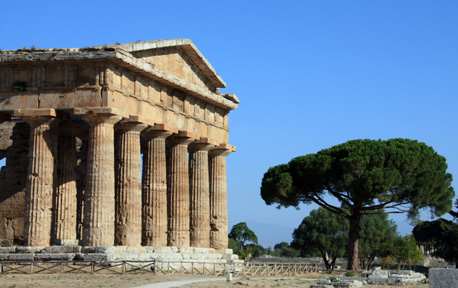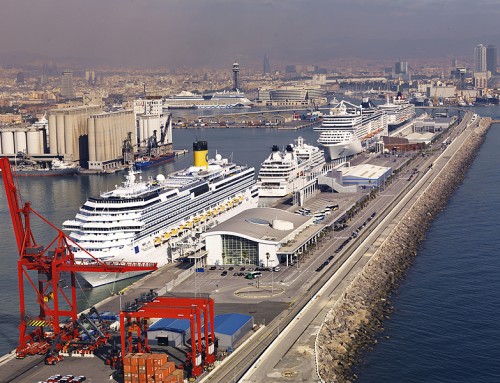 Having inadvertently succeeded in confusing one of my dinner table companions on board mv Discovery this week by writing about Sicily while cruising from Croatia, I have to apologise to him and issue a quick reminder that I am also trying to catch up with my journey last month on board Voyage to Antiquity’s Aegean Odyssey.
Having inadvertently succeeded in confusing one of my dinner table companions on board mv Discovery this week by writing about Sicily while cruising from Croatia, I have to apologise to him and issue a quick reminder that I am also trying to catch up with my journey last month on board Voyage to Antiquity’s Aegean Odyssey.
In a couple of days we 650 intrepid Discoverers will be arriving at Kalamata, in the south-west Peloponnese; we’ll see for ourselves exactly what sort of pickle the Greeks have got themselves into, and whether there will actually be anyone available to take us on excursions to Messini or to the Venetian fortress of Methoni.
Back in Italy a few weeks ago I was shown an unexpected treasure that the Greeks left behind centuries ago.
Three magnificent temples (that’s one, above), built between 530 BC and 460 BC, some pre-dating the Parthenon in Athens, are surrounded by the remains of a Roman city which grew up around them centuries later.
Originally called Poseidonia – after the Greek god of the sea – and founded by Jason and the Argonauts according to mythology, the city eventually disappeared into a malaria-infested swamp until it was re-discovered by road-builders in the 17th century.
The temples are indeed a remarkable hidden gem – it’s fortunate that they were adapted and occupied by the Romans who came along later, rather than having their columns quarried for building stone. The Roman ruins have not survived quite as intact, although it is possible to make out features such as the forum, amphitheatre and – a rare find – swimming baths.
The site is almost as famous for the discovery of some remarkable Greek painted tombs, in particular the Tomb of the Diver, which depicts on one side of a stone coffin a naked man plunging into a pool of water, believed to symbolise the passage from this world to the next (below).
Just as impressive are other panels from the same coffin. The official description says they are of men at a symposium, being entertained by “flute girls.” I much preferred Professor Mary Beard’s explanation, which is that the so-called symposium was simply an excuse for a piss-up (her words, not mine) and – despite the fact that the men were, shall we say, very comfortable with their own company – the girls provided more than music by way of entertainment.
If only we could expect an equally warm reception in Greece in a couple of days’ time . . . when we reach the Acropolis and its new museum on Saturday, we will be reminded in no uncertain terms that the Greeks would like their marble frescoes returned – quite ignoring the fact that if they had not been plundered by Lord Elgin and preserved by the British Museum, they may well have crumbled to dust by now.
But that’s a discussion for another day and another place.







Leave A Comment